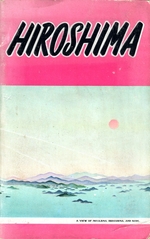Under Arthur Compton, nuclear research in the U.S. progressed rapidly. As the project grew, it became clear that its security and facility needs far exceeded what was available to the OSRD. In 1942 the S-1 Committee became the Manhattan Engineering District (MED) under the control of the U.S. Army Corps of Engineers and General Leslie R. Groves.
Following the formation of the MED, the University of Chicago Metallurgical Laboratory was created to research the application of plutonium, a product of uranium-238 discovered by Glenn T. Seaborg in 1941.1 There, Enrico Fermi constructed his experimental nuclear reactor which he brought to a controlled critical state on December 2, 1942, demonstrating the feasibility of a fission-based bomb.
As a result of Fermi’s success, the Manhattan Project's researchers and their families were moved to a remote Los Alamos, New Mexico site where Robert Oppenheimer took charge of all research.2 3 There, two plausible bomb models were developed. The first model required a uranium-235 slug to be fired into a second near-critical mass of uranium. The other model, as suggested by Richard Tolman, required two masses of plutonium to be compressed together by a controlled explosion.
For the bomb to work, the scientists needed access to large quantities of refined uranium and plutonium, and they needed it soon. To help meet demand, engineering company Stone & Webster was contracted to build the Manhattan Project facilities, and explosives manufacturer Du Pont was brought in to operate the enrichment systems.4 5 Large-scale sites were constructed in Hanford, Washington, Oak Ridge, Tennessee and Chalk River, Ontario for the express purpose of providing fissile materials to the scientists at Los Alamos.
On July 16, 1945, almost three years after work at Los Alamos had begun, an implosion-style nuclear device was set atop a tower in Alamogordo, New Mexico. This was the Trinity test, the first explosion of a nuclear weapon in human history. The Los Alamos staff was unprepared for the impressiveness of the explosion. At more than twice the anticipated energy release, it created a mushroom cloud more than seven miles high and sent out shockwaves that could be felt one hundred miles from the epicenter. The bomb was a success.
After overcoming serious reservations, on August 6, 1945, President Truman approved the dropping of "Little Boy," a gun-type bomb, on the Japanese city of Hiroshima.6 On August 9 an implosion-style bomb codenamed "Fat Man" was dropped on Nagasaki. Japan sued for peace on August 14 as a direct result of the United States' nuclear attacks.7
By the closure of the Manhattan Project in 1947, it had consumed $2.9 billion dollars, crippled Japan, caused the deaths of approximately 200,000 Japanese citizens, and ushered in a military and ideological conflict with the Soviet Union that would define the latter half of the twentieth century.8 9 The Manhattan Project had changed the world.
Notes
- 0422. Seaborg, Glenn T. & Arthur C. Wahl. "The Chemical Properties of Elements 94 and 93." Journal of the American Chemical Society, Vol. 70, No. 3, pp. 1128-1134. Cambridge: American Chemical Society, March 1948. Return to text ↑
- 0468. Standing By and Making Do: Women of Wartime Los Alamos. Eds. Wilson, Jane S. & Charlotte Serber. 1988. QC773.A1 S82 1988. Return to text ↑
- 0312. Church, Fermor S. & Peggy Pond. When Los Alamos was a Ranch School. Los Alamos Historical Society, 1974. LD7501.L7298 C48 1974. Return to text ↑
- 0443. Stone & Webster Engineering Corporation. A Report to the People. Stone & Webster Engineering Corporation in World War II. New York: Stone & Webster, 1946. Return to text ↑
- 0307. Engineering Developments in Gaseous Diffusion Process. Eds. Benedict, Manson & Carke Williams. New York: McGraw-Hill, 1949. TP245.U7 B4. Return to text ↑
- 0441. Stimson, Henry L. "The Decision to Use the Atomic Bomb." Harper's Magazine. pp. 97-107. New York: Harper, February 1947. UF767 .S7. Return to text ↑
- 0457. U.S. Army Manhattan Engineer District. The Atomic Bombings of Hiroshima and Nagasaki. Manhattan Engineer District, 1945. D767.25.H6 U6 1946. Return to text ↑
- 0460. United States Strategic Bombing Survey. The Effects of Atomic Bombs on Hiroshima and Nagasaki. Washington, D.C.: USGPO, June 30, 1946. Return to text ↑
- 0297. Alsop, Joseph & Stewart. "The Atom Bomb: Your Flesh Should Creep." The Saturday Evening Post, Vol. 219, No. 2. Philadelphia: Curtis Publishing. July 13, 1946. Return to text ↑


